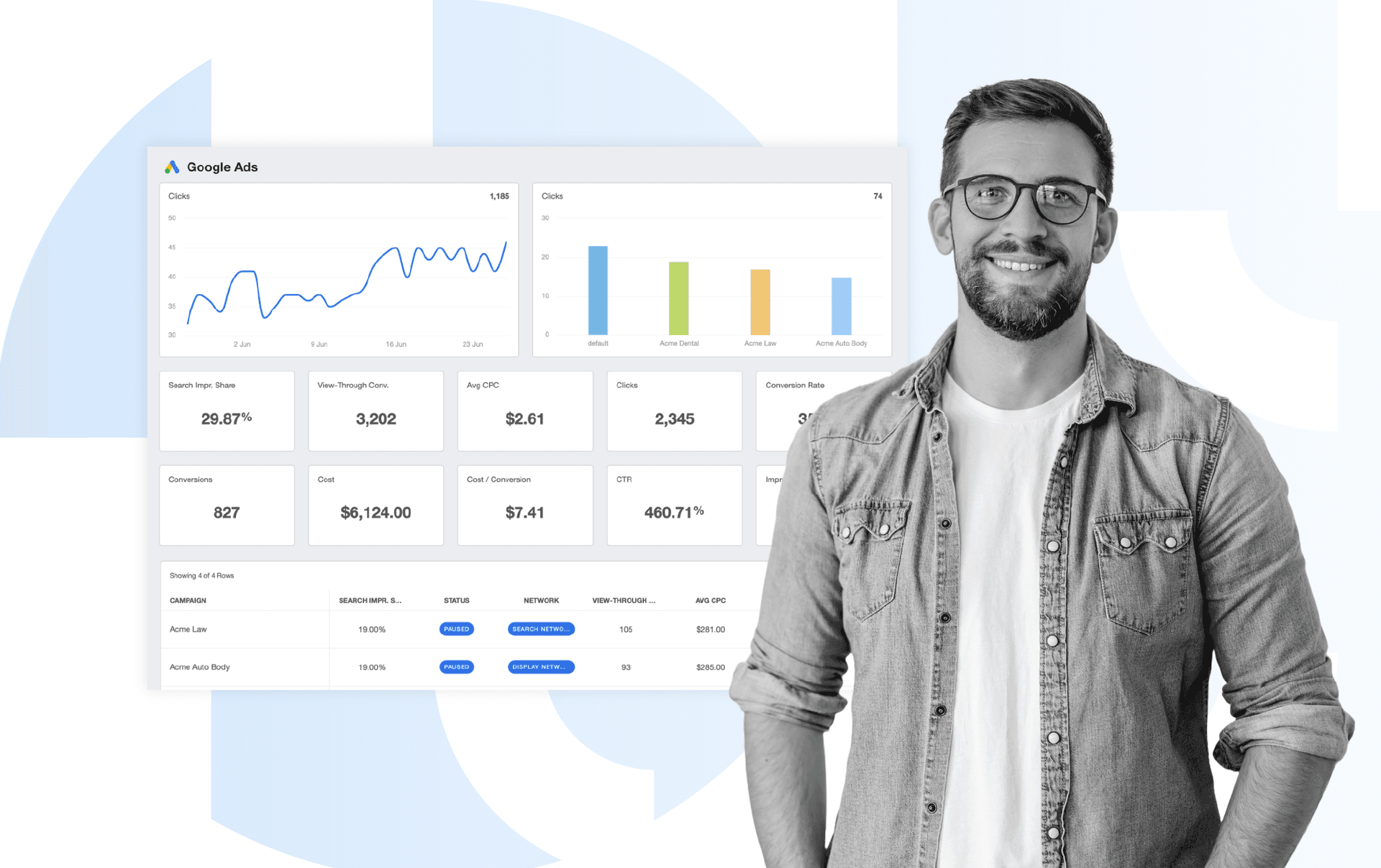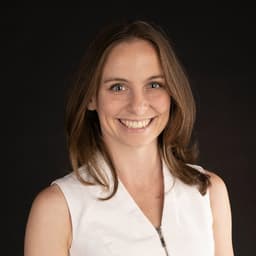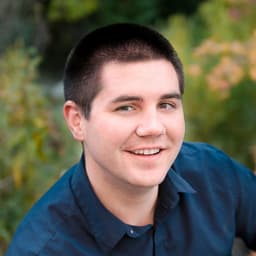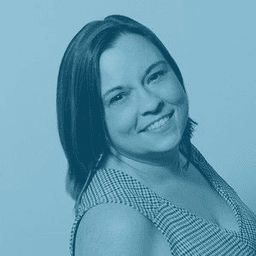Ad Spend
Budget Allocation
Ensures advertising spend is distributed optimally across channels.
Campaign Performance
Tracks if the campaign’s cost aligns with its performance.
ROI Reporting
Shows return on ad spend in client reports to highlight value.
Channel Efficiency
Compares platform performance to identify cost-effective channels.
Why Is Ad Spend Important?
Ad Spend is a critical metric because it directly impacts the overall performance of marketing campaigns. Tracking helps marketers understand whether their budget is being used efficiently and ensures that each dollar spent delivers a return.
Monitoring Ad Spend properly allows for smarter budgeting decisions, improving cost-efficiency across campaigns. For agencies, it showcases the value they bring to clients by aligning spending with campaign outcomes, maximizing return on investment (ROI) without overspending.

Stop Wasting Time on Manual Reports... Get PPC Insights Faster With AgencyAnalytics
How Ad Spend Relates to Other KPIs
Ad Spend directly affects key performance metrics, including revenue, Return on Ad Spend (ROAS), and Cost Per Lead (CPL). When marketers track the money spent on advertising campaigns, they understand whether those funds generate the desired results.
Ad Spend also ties into multiple campaigns on different ad platforms or networks. Take mobile app advertising, for example. Attributing Ad Spend across platforms helps mobile marketers analyze campaign optimization, audience reach, and performance metrics more accurately.
By tracking ad spending and related metrics, advertisers make informed decisions about how much to allocate to ad budgets, whether they are focused on driving app downloads, item purchases, or increasing market share.
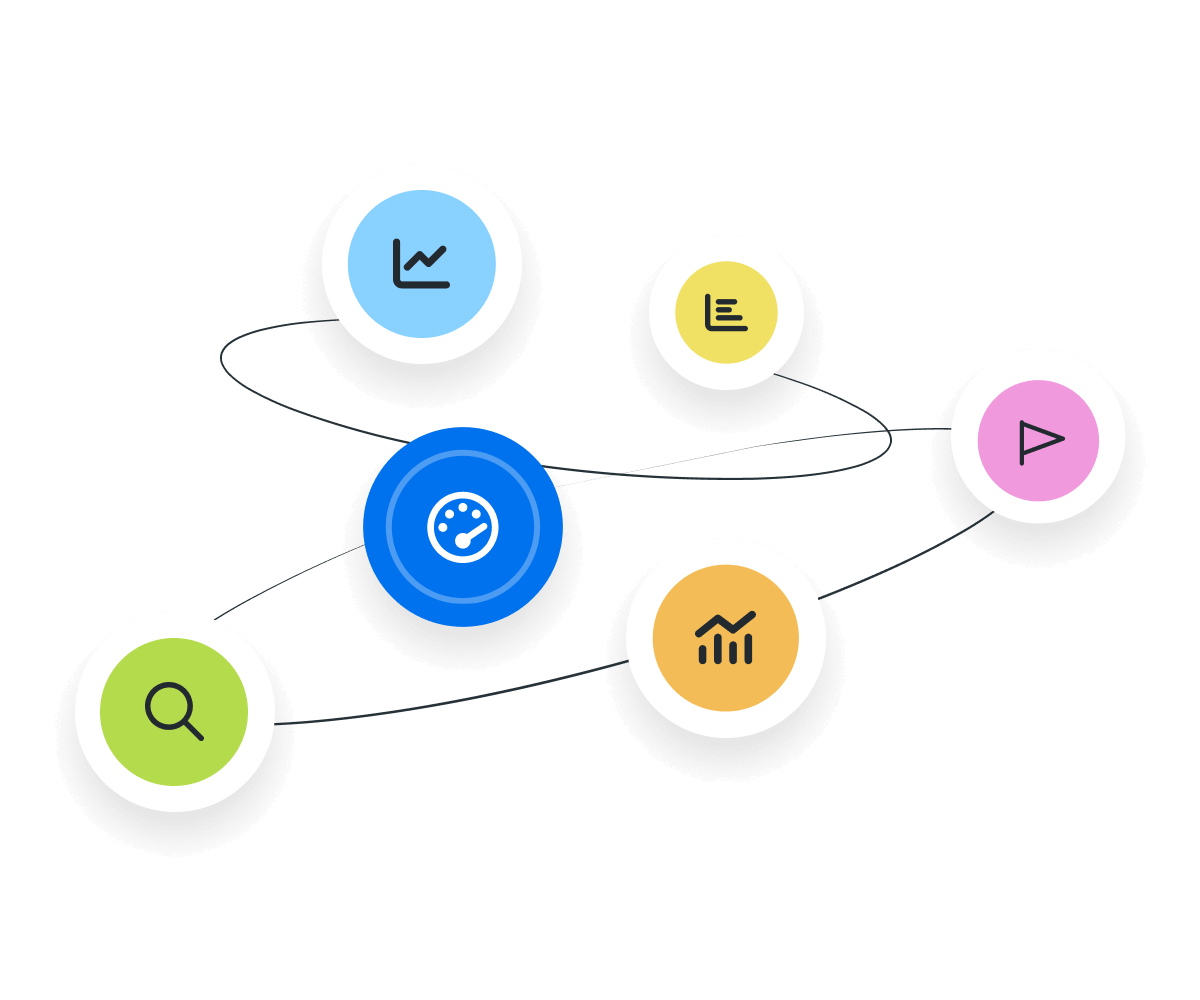
Key Factors That Impact Ad Spend
Several factors influence the amount of money required for an advertising campaign. Different ad platforms have varying Costs Per Thousand Impressions (CPM) or Cost Per Click (CPC), depending on the level of competition for the target audience and the ad placements within different ad networks.
The campaign’s target audience also affects ad spending. Reaching a more specific audience often leads to higher costs as advertisers compete for that group's attention. For desktop, mobile and app marketers, privacy restrictions and data collection limits may also affect how effectively they target certain users, influencing overall ad spend.
Ad budgets fluctuate depending on the campaign's timing. Ads running during peak seasons or major events often incur higher costs due to increased demand. Advertisers pay more when competition spikes, affecting the overall cost aggregation and requiring careful monitoring and optimizing Ad Spend.

How To Measure Ad Spend
Ad Spend is calculated by summing up the total money spent on advertising across different channels, platforms, and campaigns. This includes costs for ad placements, clicks, or impressions, depending on the pricing model used by the ad networks. The goal is to track the total cost of reaching the target audience over a specific period.
How To Set Ad Spend Benchmarks and Goals
Setting accurate benchmarks for Ad Spend involves reviewing historical data from previous ad campaigns and understanding the market conditions for the current campaign. Start by examining past campaigns to determine average costs per action, such as the Cost Per Lead (CPL) or Cost Per Thousand Impressions (CPM), across different ad platforms. This provides a baseline for future campaigns, helping gauge whether current spending aligns with past performance.
Another approach is to back-calculate the required Ad Spend based on specific revenue targets. For example, if a campaign aims to achieve a certain revenue, calculate ROAS needed to reach that goal. Then, optimize Ad Spend to meet the desired revenue.
Why Ad Spend Matters to Clients
Ad Spend is a key client metric because it represents the money directly invested in driving business outcomes. Clients want to know that their advertising budgets are being used wisely and generating returns. By tracking Ad Spend, they see if their investments yield the desired results, whether through increased sales, app downloads, or higher visibility in the market.
Clients rely on Ad Spend data to assess the efficiency of their advertising campaigns. This helps them decide where to allocate future budgets and which channels or platforms deliver the best results. If Ad Spend is too high without delivering sufficient value, clients may question the marketing strategy's effectiveness and shift focus to more cost-effective strategies.

Why Ad Spend Matters to Agencies
For agencies, Ad Spend is a critical factor in shaping a marketing strategy and delivering successful outcomes for clients. Agencies need to attribute Ad Spend accurately across multiple channels, ensuring the money is aligned with specific advertising goals. Whether working in mobile marketing, print media, or digital platforms, agencies rely on Ad Spend data to track how well each campaign is performing and make adjustments when necessary.
Agencies also use Ad Spend to manage ad costs and ensure campaigns are run within the set budget. By analyzing campaign data, agencies determine the Ad Spend required to meet the client’s business objectives. Properly tracking and adjusting Ad Spend helps agencies refine their strategies, reduce waste, and deliver a higher return on investment (ROI) for clients.

Try the Only Reporting Software Created For Marketing Agencies.
Best Practices When Analyzing and Reporting on Ad Spend
Conducting a thorough analysis of Ad Spend across different platforms is essential for improving campaign efficiency. By breaking down the cost of each channel and placement, marketers and agencies refine their strategies to meet the desired advertising goals.
Ensure Data Accuracy
It’s essential to track Ad Spend consistently across all channels, whether in mobile marketing, print media, or digital ads.
Analyze Over Time
Analyzing Ad Spend over time gives insight into long-term trends. This helps identify patterns, such as when ad costs rise due to increased competition or seasonal factors.
Compare Across Channels and Campaigns
Comparing how money is allocated across mobile marketing, print media, and digital ads provides a clearer view of which channels deliver the best return.
Put in Context
Placing Ad Spend in the context of broader campaign data involves looking at related KPIs such as revenue, conversions, and cost per action.
Align to Client Goals
Understanding the client’s objectives—increasing brand awareness, driving app downloads, or boosting sales—helps ensure that every dollar spent pushes toward those targets.
Visualize Performance
Breaking down Ad Spend by platform, time period, or ad placement makes it easier to pinpoint the highest-performing channels.
Google Ads Dashboard Example

Related Integrations
How To Optimize Ad Spend
Optimizing Ad Spend is key to maximizing the return on investment for advertising campaigns. Advertisers use their budgets more efficiently by refining audience targeting, optimizing ad placements, and leveraging data-driven strategies. The following tips offer actionable insights for getting the most out of every dollar spent on ads.
Refine Audience Targeting
Focus on high-converting segments to reduce costs and improve return on investment.
Optimize Ad Placements
Shift spending to better-performing platforms and placements to maximize ad efficiency.
Leverage Automated Bidding
Use automated bidding tools for more efficient budget allocation and improved ad performance.
Related Blog Posts
See how 7,000+ marketing agencies help clients win
Free 14-day trial. No credit card required.


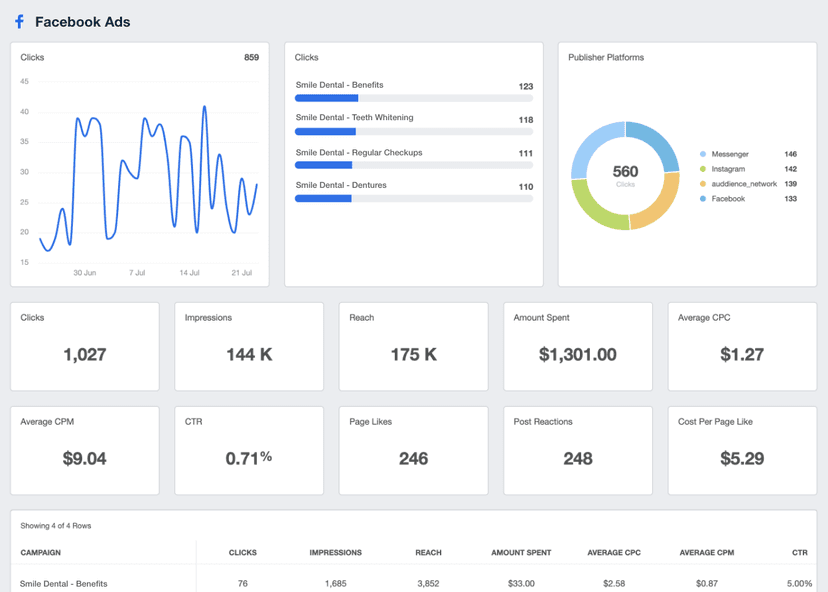

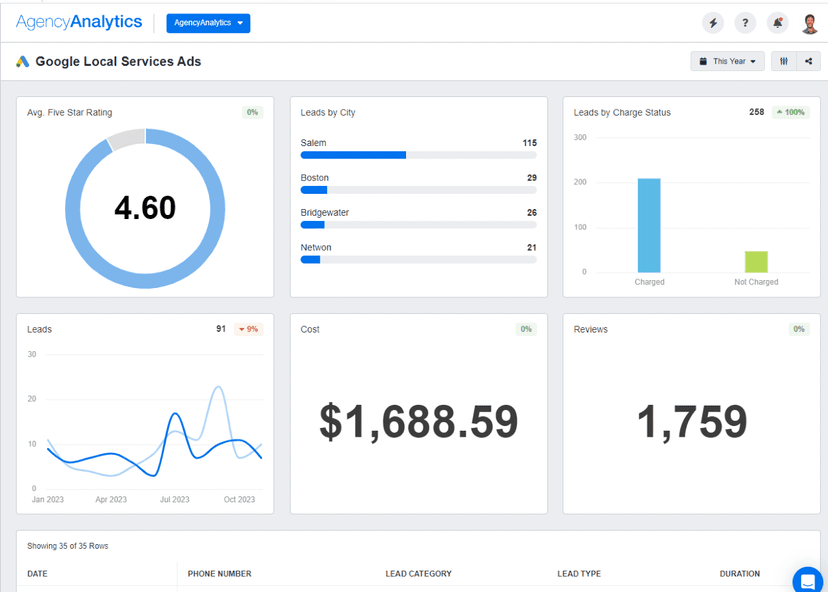
![The Ultimate Google Ads Optimization Checklist [Guide & Tips] An Easy to Follow Guide to Google Ads Optimization + a Downloadable Checklist](/_next/image?url=https%3A%2F%2Fimages.ctfassets.net%2Fdfcvkz6j859j%2F1RGRDTvZOx2bH3PCJMjDsD%2Fc239f0aed512ea0e761f3713dd6e59ac%2FGuide-to-Google-Ads-Optimization-Checklist.png&w=1920&q=75)
